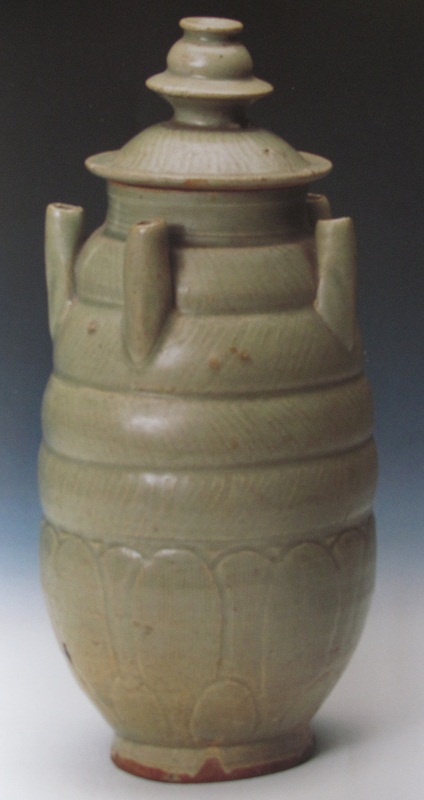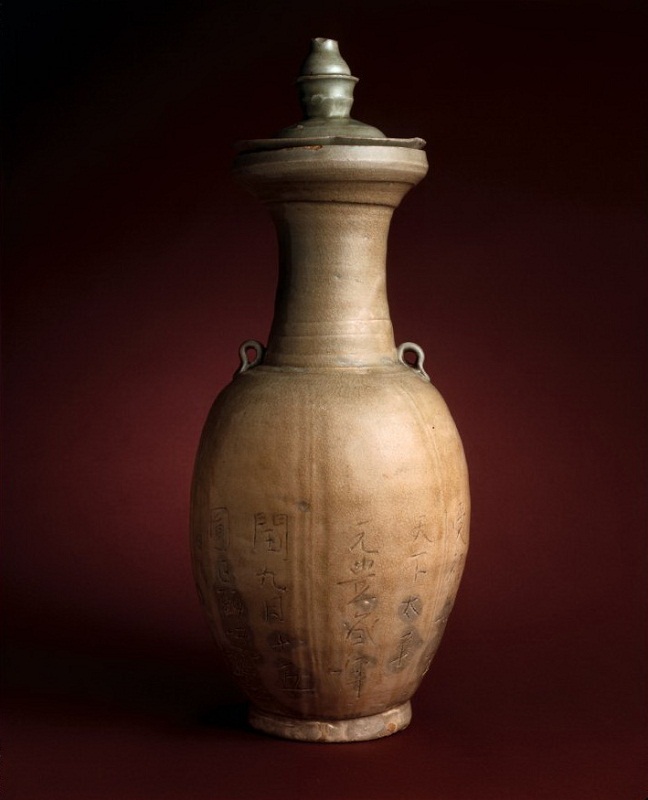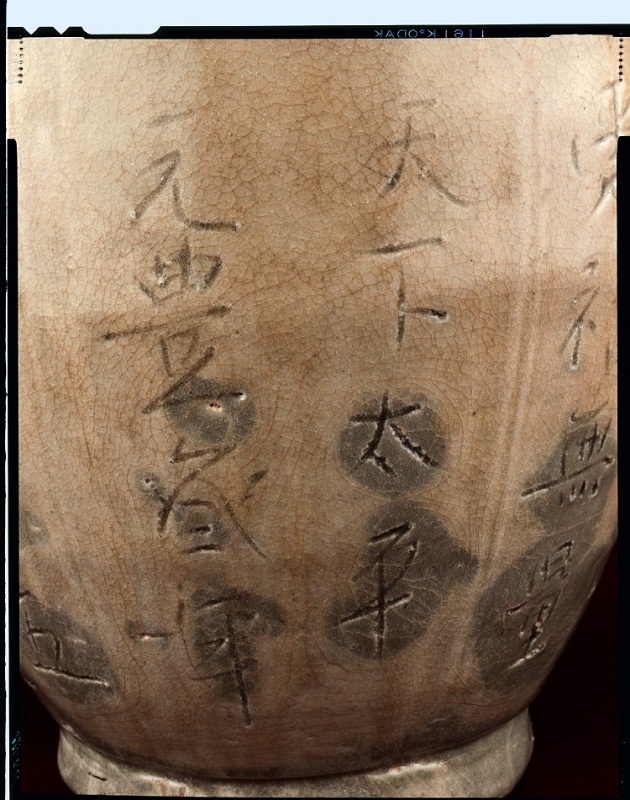Celadon Porcelain Five-tubed Vase by Longquan Kiln
Northern Song Dynasty (960-1127 A.D.)
Diameter at Opening: 7.9cm; Diameter at Bottom: 8.5cm; Diameter of Lid: 6.2cm; Height: 28.1cm
Celadon Porcelain Five-tubed Vase by Longquan Kiln of Northern Song Dynasty (960-1127 A.D.)
This vase with a straight body, short neck, five-stories round belly and five straight cylindric tubes on the second story of the belly in equidistant distance with each other, has a beautiful shape as a pagoda, smooth body and a unique lid. The tubes are not connected with the vase body. The lid is in the shape of an upside-down bowl and decorated with a bottle gourd shaped hollow button.
This piece of masterpiece created by Longquan Kiln, with bluish yellow glaze color which is thick and strong, no crackle all around its body, is standing out among other vases by its harmonious luster and unique shape.
深入探索
About Longquan Kiln
Longquan celadon refers to Chinese celadon produced in Longquan kilns which were largely located in Lishui prefecture in southwestern Zhejiang Province. With those in other prefectures the total of discovered kiln sites is over two hundred, making the Longquan celadon production area one of the largest historical ceramic centers in all of China.
Celadon production had a long history at Longquan and related sites, but it was not until the Five Dynastiesand Northern Song period that production of scale truly began. Five Dynasty wares displayed a variety of shapes and carved finishes. The era of greatest ceramic production was not until the Southern Song, Yuanand Ming periods. Longquan celadons thus were an important part of China’s export economy for over five-hundred years.
The technique for producing celadon porcelain at the Longquan Kiln in east China’s Zhejiang Province has gained recognition as part of the World Cultural Heritage.
The art faded in popularity around the 18th century during the Qing dynasty and was nearly lost. But after the founding of the new China, the traditional technique was revived and became a part of the national intangible heritage protection list in 2006. Porcelains like these have been valued for their rarity and treasured for their preeminent qualities throughout history.
Lavender Grey Glazed Flower Receptacle by Longquan Kiln
Southern Song Dynasty (1127—1279 A.D.)
Excavated by Suining, Sichuan Province
Green Glazed Male Figure with a Lotus Leaf Shaped oil lamp by Longquan Kiln
Yuan Dynasty (1206-1370 A.D.)
From the collection of Longquan Celadon Porcelain Museum
Green Glazed Vase Carved with Flowers by Longquan Kiln
Qing Dynasty (1636—1912A.D.)
From the collection of Longquan Celadon Porcelain Museum
Porcelain Flying Statues of Dunhuang frescoes by Longquan Kiln
1970s
By Dong Binghua
Celadon Porcelain Vase by Longquan Kiln
Southern Song Dynasty (1127—1279 A.D.)
Excavated from Xikou Kiln
From the collection of Longquan Celadon Porcelain Museum

Celadon Porcelain Pot by Longquan Kiln
The reign of Hongwu period of Ming Dynasty(1368--1398 A.D.)
Excavated from Imperial Kiln of the reign of Hongwu period
Celadon Porcelain Vase with Five Leaves and Rooster-shaped Lid by Longquan Kiln
Northern Song Dynasty (960-1127 A.D.)
From the collection of Longquan Celadon Porcelain Museum
Celadon Porcelain Vase with A Tiger by Longquan Kiln
Southern Song Dynasty (1127—1279 A.D.)
From the collection of Longquan Celadon Porcelain Museum

Celadon Porcelain Five-tubed Vase by Longquan Kiln
Northern Song Dynasty (960-1127 A.D.)
Excavated from Qiufan, Tashi Village, Longquan City

Celadon Porcelain Vase with a Dish-shaped Mouth by Longquan Kiln
Northern Song Dynasty (960-1127 A.D.)
From the collection of British Museum

Celadon Porcelain Vase with a Dish-shaped Mouth by Longquan Kiln
Northern Song Dynasty (960-1127 A.D.)
From the collection of British Museum



